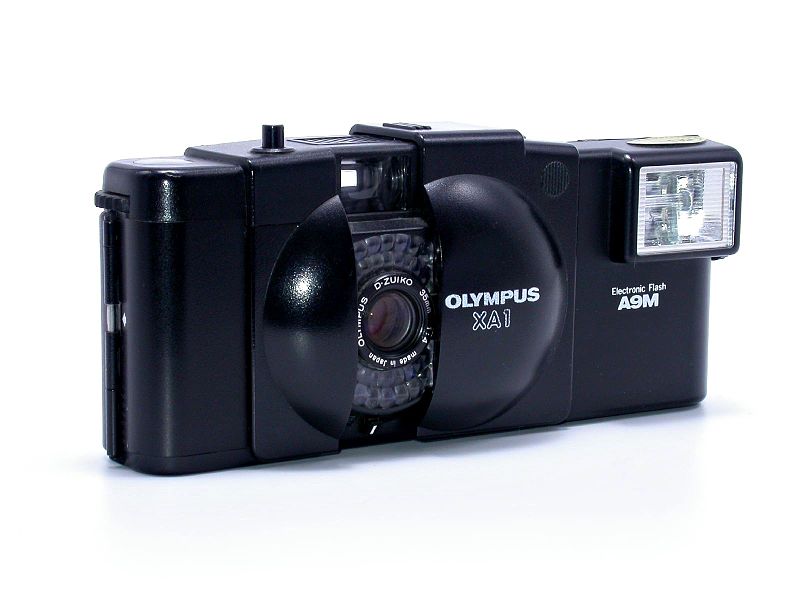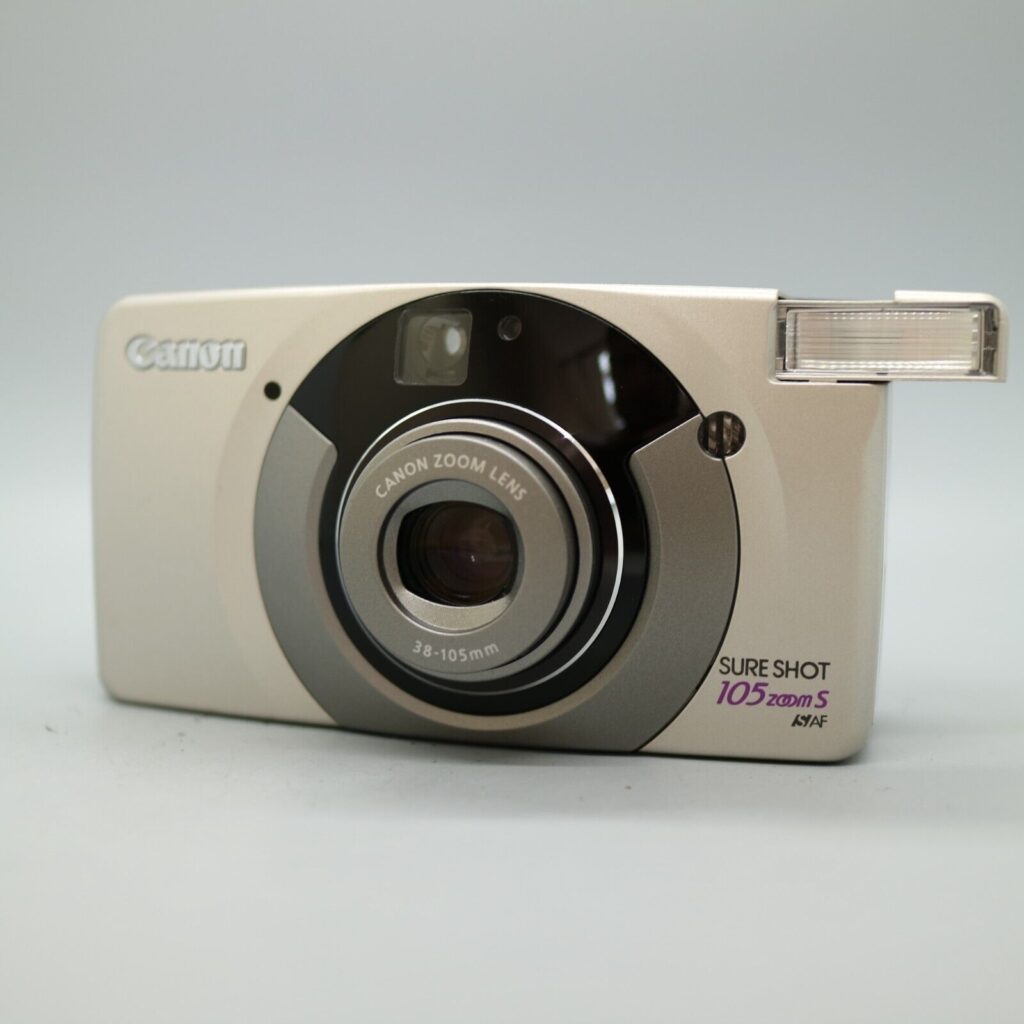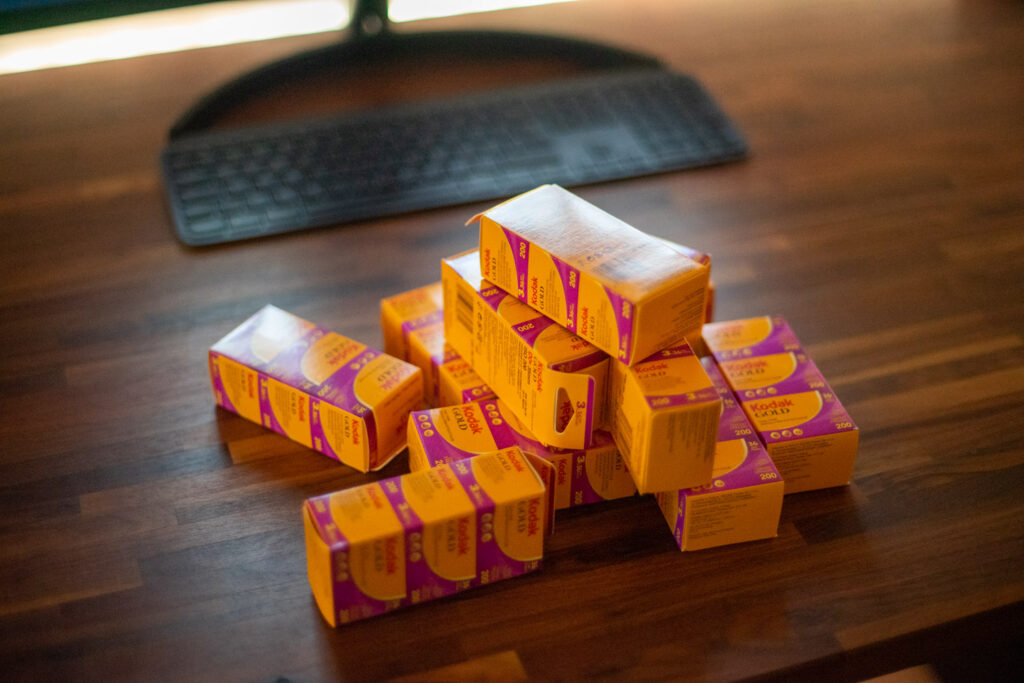Welcome to our in-depth guide designed to help you select the best film for your Contax T2, one of the most sought-after compact film cameras in the market. Introduced in 1990 by the German manufacturer Contax, the T2 has since then been celebrated for its impressive feature set, such as its high-quality Carl Zeiss T* multi-coated Sonnar 2.8/38mm lens, robust titanium body, and convenient automatic functions. It provides users with a wide range of creative possibilities.
If you’re the proud owner of a Contax T2, you might find yourself asking: which film is the best fit for this legendary camera? With so many options available, it can indeed be a daunting task to find the right film that suits your unique style and needs. That’s why we’ve created this comprehensive guide – to take the guesswork out of the equation and help you uncover the true potential of your Contax T2. Let’s delve into the world of film photography together, exploring different film sizes, types, and considerations to make your Contax T2 experience nothing short of amazing.
Film Sizes and what is the right one for the Contax T2
In film photography, there’s a vast variety of film sizes, each with its unique characteristics. Among these, the 35mm film has gained widespread recognition for its balance of quality, affordability, and versatility, making it the standard for most modern film cameras.
The Contax T2 is designed specifically for the 35mm film format, widely regarded as the ‘everyman’ of film sizes. This means as a Contax T2 owner, you can explore a broad spectrum of film types, speeds, and colors. The 35mm film is suitable for various photography genres, from landscapes to street photography, catering to both amateur and professional photographers.
One possible downside is that 35mm film might not deliver the same level of detail as larger formats, and its grain might be more noticeable in larger prints. However, these traits often contribute to the unique aesthetic charm that film enthusiasts appreciate.
The Various Types of Film Stocks
When it comes to shooting with your Contax T2, there are three primary types of 35mm film stocks you can choose from: Black and White, Color Negative, and Slide film. Each has its unique characteristics, pros, and cons, suitable for different shooting conditions and photographic styles.
Black and White Film
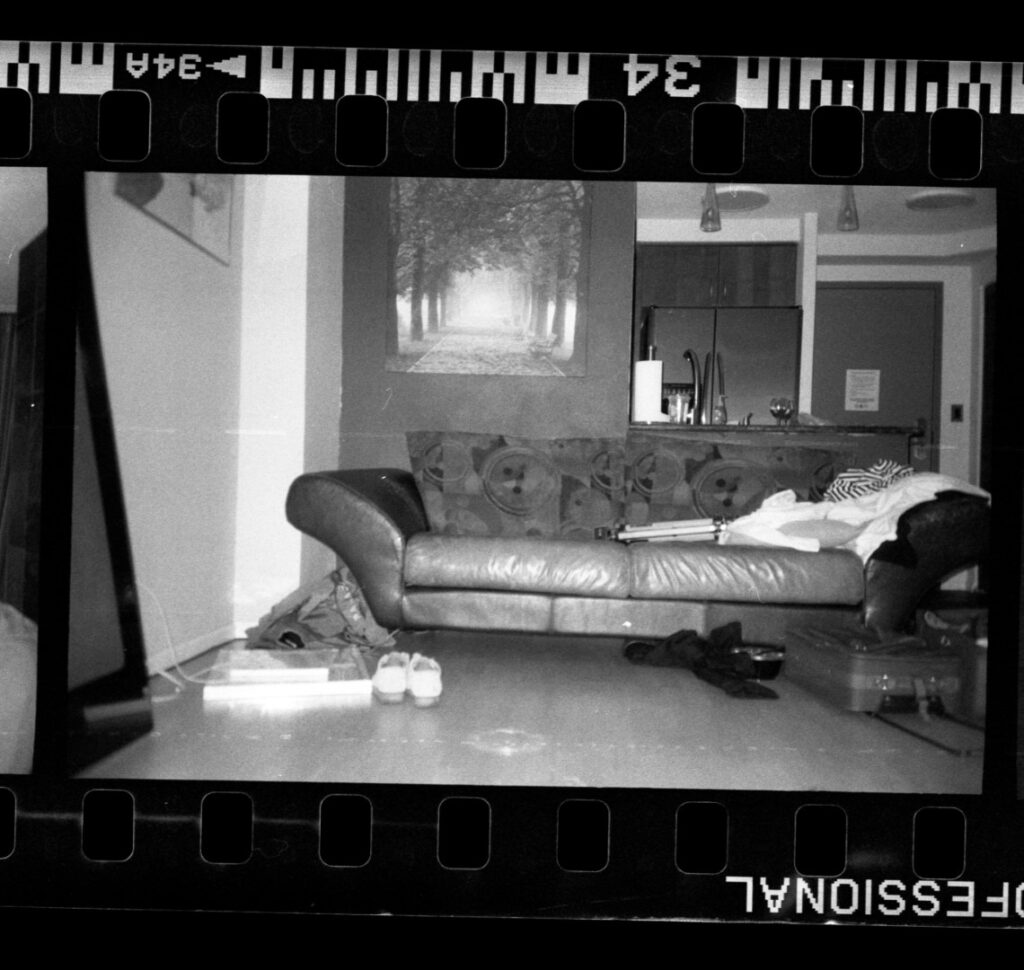
Black and White film is a classic medium that dates back to the origins of photography. It’s favored for its timeless aesthetic, excellent contrast, and emphasis on texture and composition. It’s an ideal choice for street photography, portraiture, and any scenario where you want to capture the raw emotion of a scene.
Among the advantages of black and white film is its relative simplicity to develop at home, giving photographers more control over the final image. It’s also generally more forgiving with exposure than color films. However, it does require a thoughtful approach to lighting and contrast, as colors translate into a range of greys.
Color Negative Film
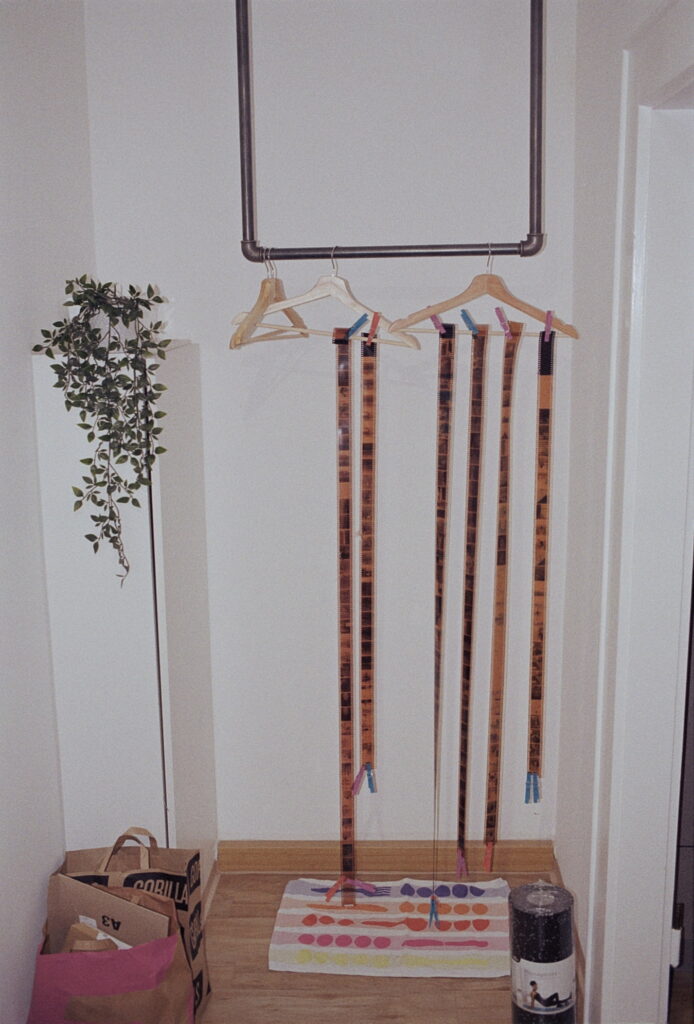
Color Negative Film is perhaps the most common type of color film. It offers a broad dynamic range and is highly forgiving in terms of exposure, making it suitable for various lighting conditions and themes. Whether you’re shooting landscapes, portraits, or everyday snapshots, color negative film can deliver vibrant, lifelike colors.
Slide Film
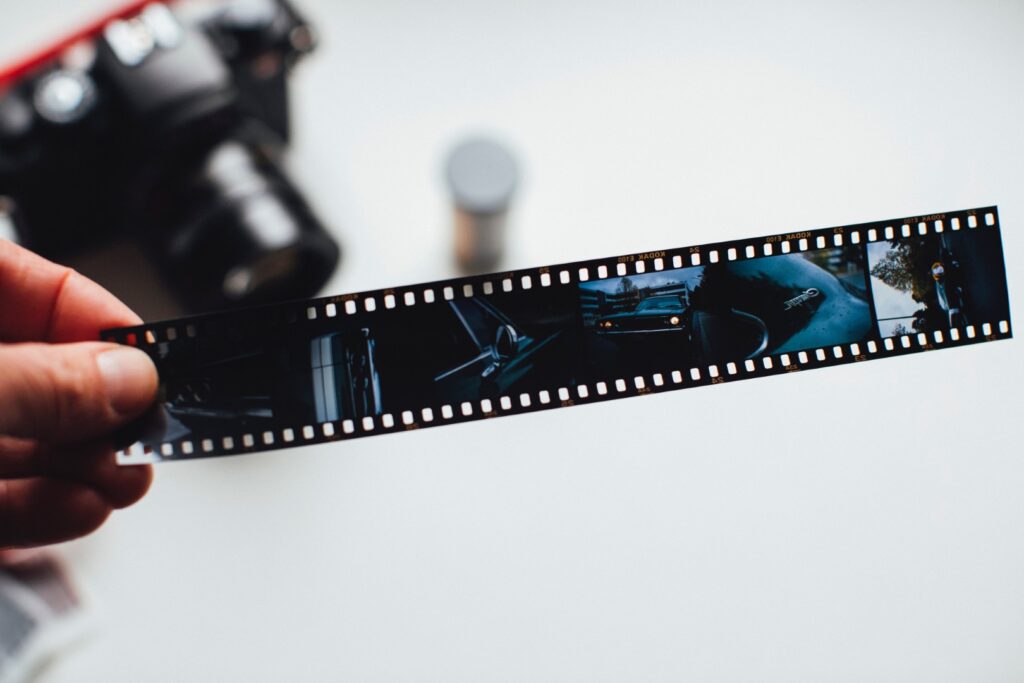
Slide film, also known as reversal or transparency film, produces a positive image directly on the film. It’s loved for its vivid colors, contrast, and fine grain. However, it has a narrower exposure latitude compared to negative film, making correct exposure crucial. Slide film is favored for scenarios where color accuracy and high detail are important, such as commercial work or landscape photography. Due to the complext development process it is usually a lot more expensive.
Factors to Consider When Choosing a Film for Your Contax T2
Choosing the right film for your Contax T2 requires an understanding of various factors, including film speed, the aesthetic qualities you want to capture, and how you plan to develop and scan your film.
Film Speed
Film speed, denoted in ISO, signifies a film’s sensitivity to light. Lower ISO films such as ISO 100 or 200 have less light sensitivity, yielding images with finer grain and higher detail, ideal for brightly lit conditions. Conversely, higher ISO films like ISO 800 or 1600 have more light sensitivity, making them well-suited for low-light conditions, albeit with generally more grain.
The Contax T2 stands out with its automatic exposure capabilities, supporting an aperture-priority mode. Notably, it also features a DX coding system, automatically detecting the ISO of your film if it ranges from ISO 25 to 5000. DX coding simplifies the process of setting the correct ISO, especially helpful for beginners or those looking to focus more on composition than manual settings.
In terms of practical use, this wide ISO range offers substantial flexibility. Lower ISO films might be your choice for capturing detailed landscape shots on sunny days, while higher ISO films will perform better for indoor photography or capturing scenes in low-light conditions. It’s all about choosing a film speed that aligns with your shooting environment and the aesthetic you aim to achieve.
Aesthetic Qualities of the Film Stock
Different films can render colors, contrast, and grain differently, giving each film stock its unique aesthetic. For instance, some films are known for their vibrant, saturated colors, while others might offer a more subdued, natural color palette. Black and white films can vary in contrast and graininess, influencing the mood of your images.
When choosing a film for your Contax T2, consider the aesthetic you aim to achieve in your photography. Do you prefer high-contrast black and white images, or do you lean towards vivid, saturated colors? Identifying your desired aesthetic will help you choose a film that brings your vision to life.
Developing and Scanning Film
Once you’ve taken your photos, the next step is to develop and scan your film. If you’re hands-on and willing to invest time and resources, you can set up your own home darkroom to develop and scan your film. This gives you full control over the process, and with black and white film, it can be quite straightforward.
Alternatively, many photographers opt to send their film to a professional lab. This can be more convenient and yield consistently high-quality results, especially with color films that require more complex chemical processes.
Ultimately, the choice between home and lab development depends on your budget, available time, and desired level of involvement in the process.
Top Film Choices for Contax T2
Color Films
With the vast array of 35mm film stocks available, you have the freedom to select one that best aligns with your creative vision and the unique capabilities of the Contax T2. We’ve compiled a comprehensive list of 35mm color films currently available, which you can check out here. However, if you’re looking for some quick recommendations, here are three color films that pair particularly well with the Contax T2:
Kodak Portra 400

Kodak Portra 400 is a professional-grade film beloved for its superb rendition of skin tones, making it a go-to choice for portrait photographers. Its grain structure is fine and unobtrusive, offering a smooth image quality that retains detail beautifully. With its moderate speed of ISO 400, Portra offers flexibility in a variety of lighting conditions, and its wide exposure latitude is forgiving of minor exposure mistakes. The Contax T2, known for its sharp lens, complements Portra 400’s fine grain and detail-oriented characteristics, making it a great combination for portraiture and general photography. Check current prices here.
Kodak Ektar 100
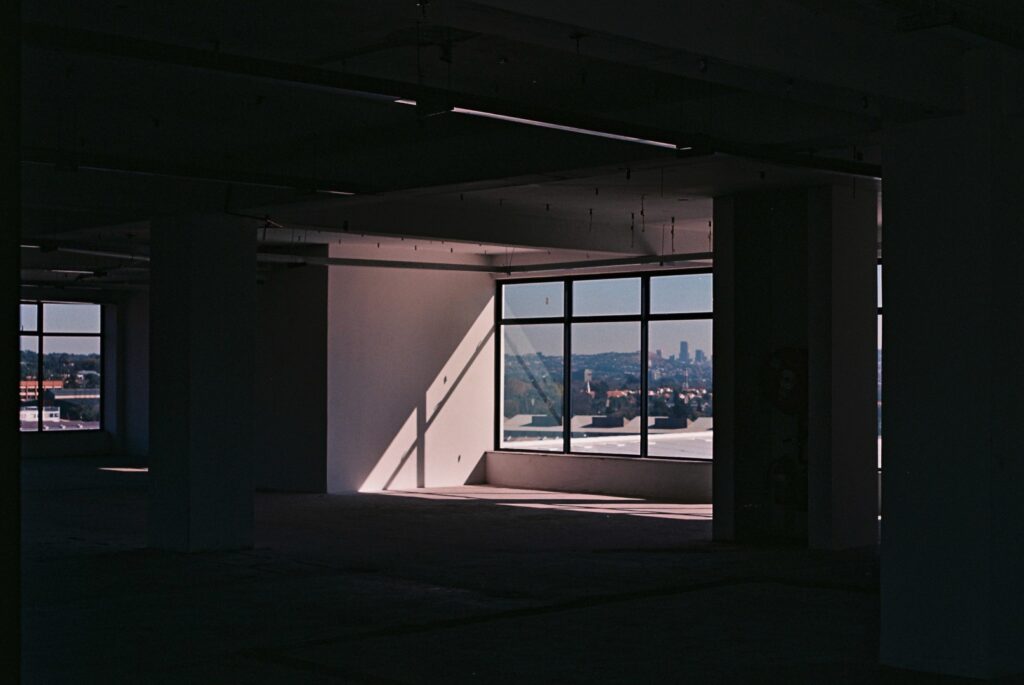
If your photographic interests lean more towards landscapes or vividly colored still-life scenes, Kodak Ektar 100 could be the film for you. It’s the finest-grain color negative film on the market, offering vibrant, saturated colors and exceptional detail, especially under bright, sunny conditions. With an ISO of 100, Ektar requires plenty of light, but in return, it delivers images with a ‘larger-than-life’ aesthetic. The Contax T2’s lens quality shines when paired with this film, capturing every detail with precision, while the camera’s automatic exposure with aperture priority ensures well-exposed images. Check current prices here.
Fujicolor 100

For those seeking a versatile, cost-effective film for everyday use, Fujicolor 100 is an excellent option. Its color reproduction is realistic with a slightly warm bias, producing pleasing skin tones and overall well-balanced images. With an ISO of 100, it works best in outdoor or well-lit scenarios. The DX coding system of the Contax T2 automatically identifies the correct ISO, ensuring optimal exposure. The camera’s precision optics paired with the broad tonal range of this film provides consistently pleasing results, whether you’re capturing snapshots of daily life or venturing into more artistic compositions. Check current prices here.
Black and White Films
Ilford HP5 Plus

Ilford HP5 Plus is an enduring favorite among black and white film photographers due to its fine grain and wide exposure latitude. With an ISO of 400, it’s versatile in a range of lighting conditions and can be pushed or pulled during development for greater contrast control. HP5 Plus renders a full range of tones, providing deep blacks and bright whites with a good amount of detail in the shadows and highlights. In combination with the Contax T2’s sharp lens you can use HP5 Plus for anything from street photography to portraiture, capturing stunning, richly textured monochrome images. Check current prices here.
AGFA APX100
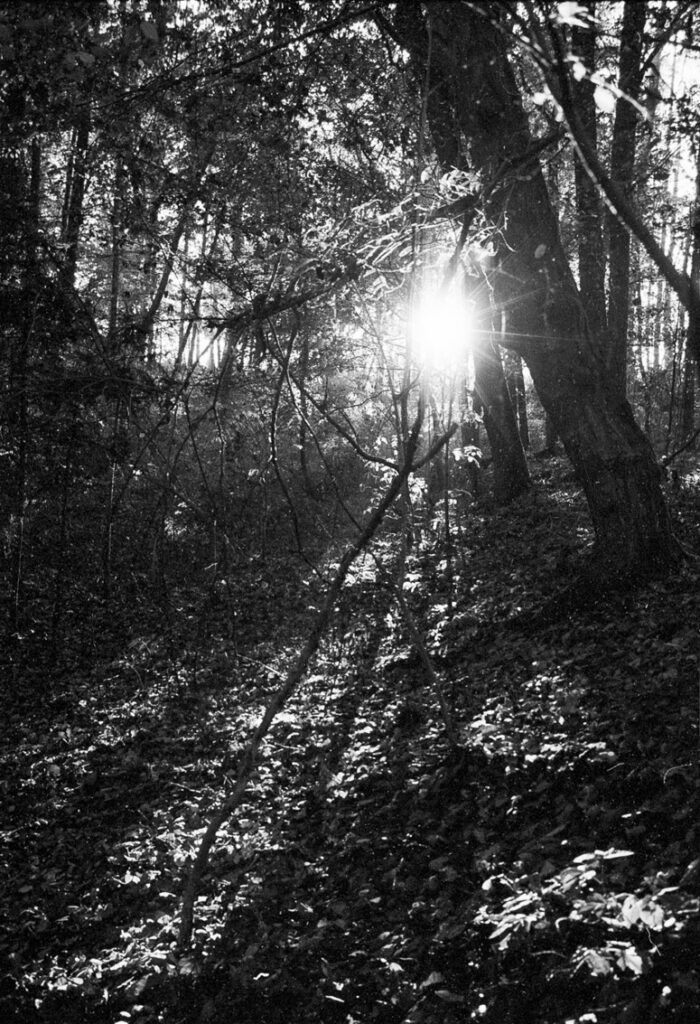
AGFA APX100 is a black and white film that is known for its fine grain and high resolving power, producing exceptionally sharp images. Its ISO of 100 makes it best suited for brighter conditions or scenes where you want to capture a high level of detail. The tonality of APX100 is beautifully balanced, with excellent contrast that gives depth to your black and white images. Given the Contax T2’s remarkable lens quality, it can fully utilize the film’s high-resolution characteristics, delivering photographs that combine clarity with the timeless aesthetic of black and white film. Check current prices here.
Fujifilm Neopan Acros II

Fujifilm Neopan Acros II is a reincarnation of the beloved Acros film. It’s revered for its ultra-fine grain, exceptional sharpness, and wide tonal range. With an ISO of 100, it promises outstanding detail and resolution, especially in bright light conditions. This film is unique in its ability to maintain shadow detail without sacrificing highlights, leading to images with a broad dynamic range. Check current prices here.
Slide Film
Provia 100F
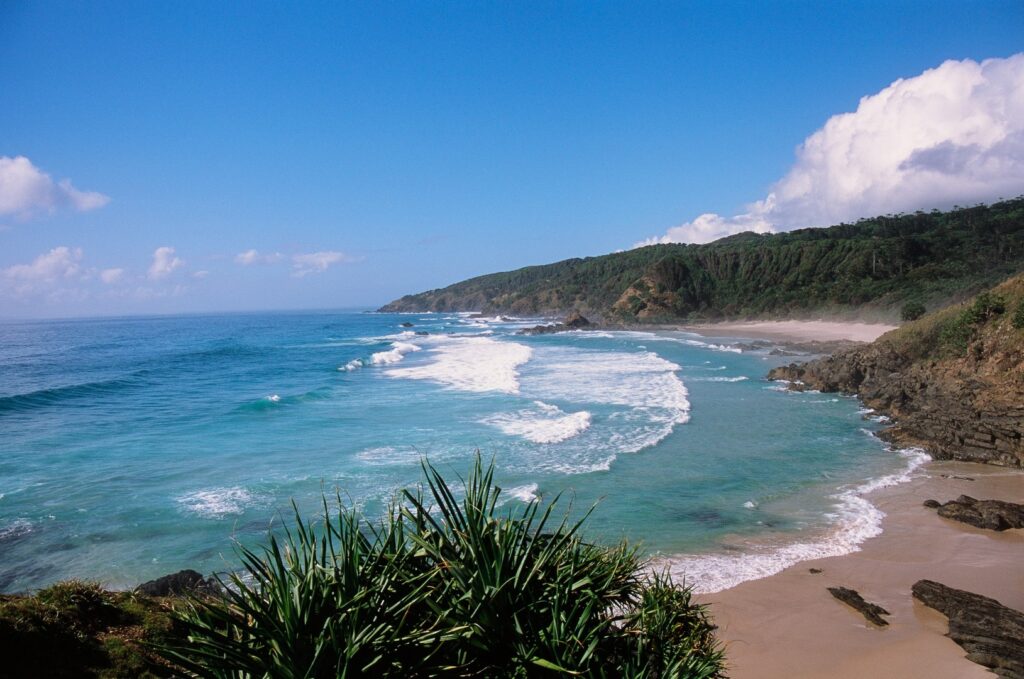
Provia 100F is a professional-grade slide film renowned for its incredibly fine grain and exceptional sharpness, producing images with striking clarity and detail. With an ISO of 100, it performs best in bright lighting conditions and is particularly effective for landscape and nature photography where color fidelity is key. Provia 100F is known for its realistic and nuanced color reproduction, rendering subtle tones and shades with precision. When used with the Contax T2’s precise optics and automatic exposure control, this film can capture finely detailed, color-accurate images that truly stand out. Check current prices here.
Velvia 50

Velvia 50 is another exceptional slide film from Fujifilm, known for its ultra-high color saturation and fine grain. Its slower speed of ISO 50 results in images with remarkable resolution and a wide dynamic range, offering deep, rich colors that are a hallmark of this film. Velvia 50 is particularly favored by landscape photographers for its ability to deliver intense, vibrant colors and crisp detail. In combination with the Contax T2’s superior lens quality and aperture priority mode, it allows photographers to capture images with unparalleled color richness and detail, making every shot truly memorable. Check current prices here.
Budget-Friendly Film Alternatives for Contax T2
Film photography can be an expensive hobby, especially when experimenting with a variety of film stocks. However, there are budget-friendly films available that offer excellent performance for their price, giving both amateur and seasoned photographers a cost-effective way to enjoy shooting with the Contax T2.
Kodak Gold 200
This color negative film is a cost-effective choice that delivers robust color reproduction and fine grain structure for an appealing, classic look. With an ISO rating of 200, it’s a versatile option for different light scenarios, especially daylight outdoor shooting. What makes Kodak Gold 200 special is its warm, nostalgic color palette which complements the Contax T2’s ability to accurately capture colors and nuanced details, enhancing the aesthetic value of your images. Check current prices here.
Fomapan 400 Action
For black and white enthusiasts, Fomapan 400 Action provides an economical yet high-quality alternative. This film’s traditional grain structure, coupled with the higher speed of ISO 400, allows for a vintage feel in a variety of lighting conditions. Fomapan 400 is known for its good exposure latitude, offering flexibility in post-processing and the opportunity to manipulate contrast levels. When used with the Contax T2, the camera’s auto-exposure feature and precise metering can take advantage of Fomapan 400’s wide exposure latitude, yielding visually striking black and white images that don’t strain your budget. Check current prices here.
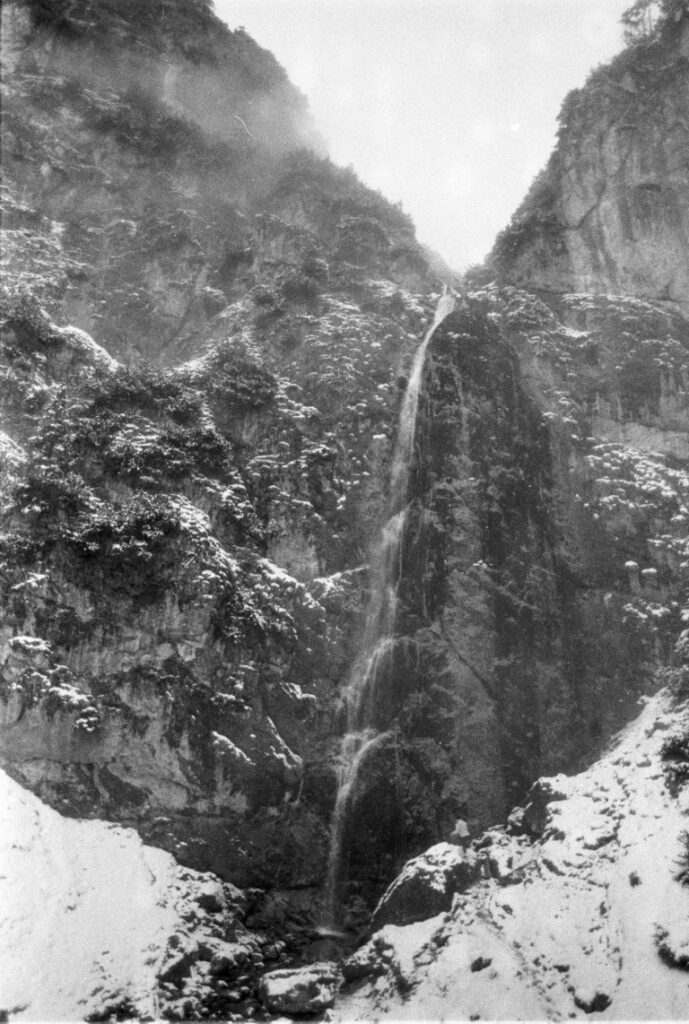
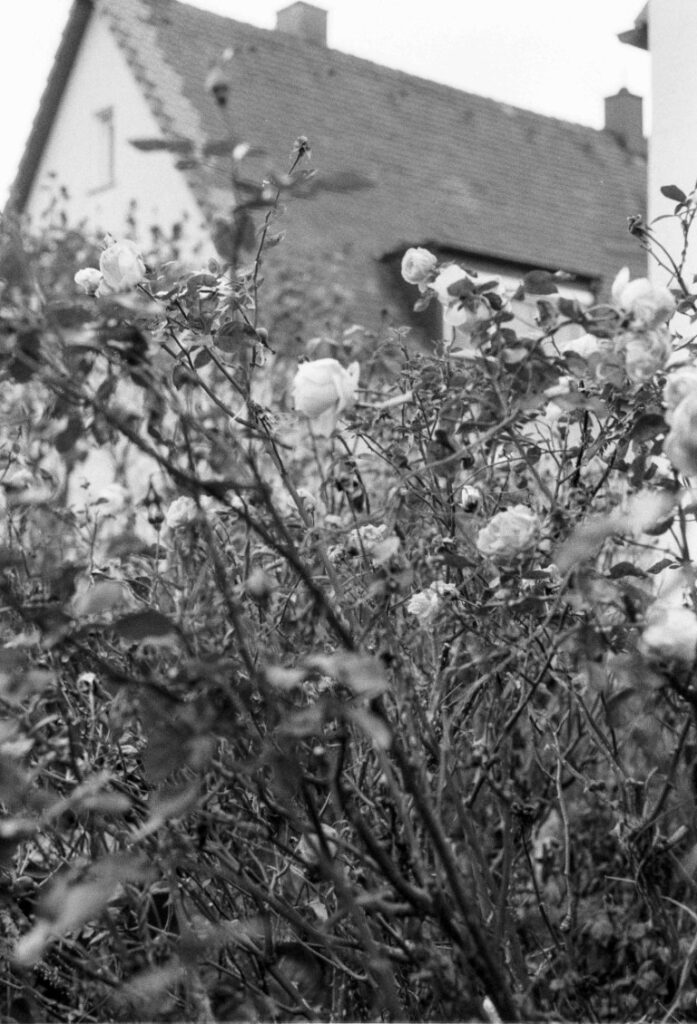
For more Foma 400 images, check out my Fomapan 400 Flickr album. We’ve captured our firsthand experiences with Fomapan 400 in this YouTube video, covering everything from shooting to self-developing the film. Take a look for a comprehensive look.
Frequently Asked Questions about Using Film in Contax T2
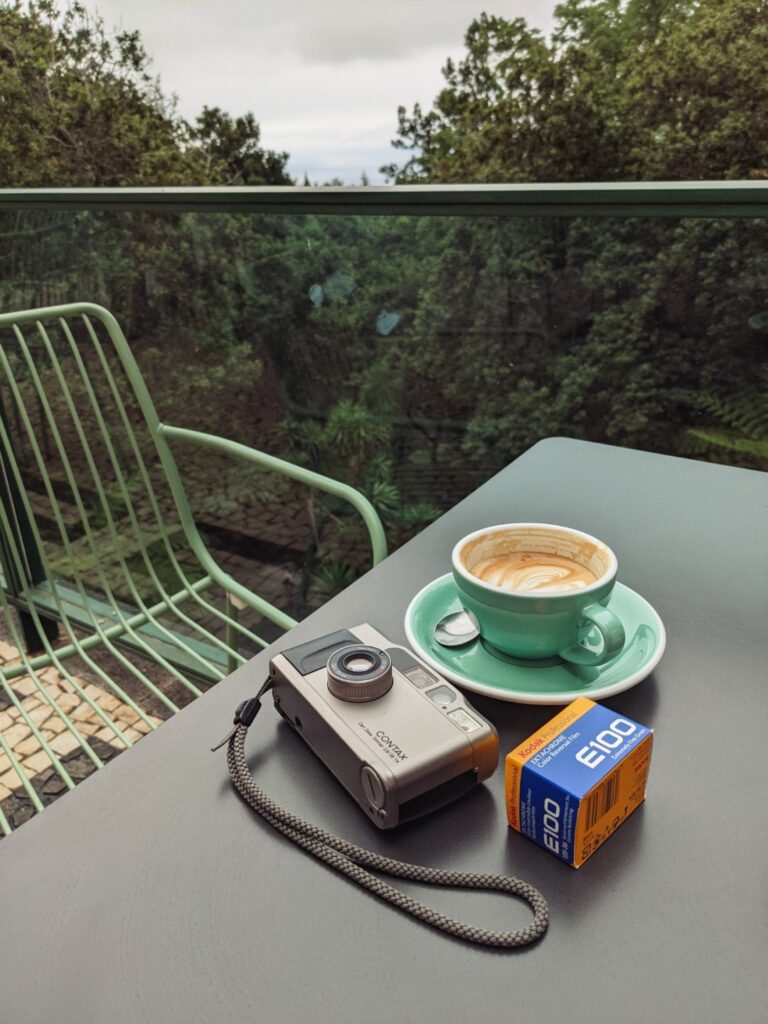
We understand that using film with the Contax T2 may bring up many questions, especially for those new to the camera or to film photography. Here, we will address some of the most common inquiries.
How Does Contax T2 Perform in Low Light Conditions?
The Contax T2 performs well in low light, thanks to its fast f/2.8 lens and its broad ISO range of 25-5000. The camera’s built-in flash also helps illuminate subjects in darker environments. Moreover, it has an aperture-priority automatic exposure system that can adapt to changing light conditions, ensuring well-exposed images in most situations. The most important part here is to choose the correct film stock.
How to Choose the Right ISO for My Contax T2?
Choosing the right ISO depends on the lighting conditions. Lower ISOs (25-100) are suitable for bright conditions, while higher ISOs (400-5000) work well in dimmer environments. Note that higher ISO films tend to have more grain, which can add texture to your images but can also reduce sharpness.
Can I Use Infrared Film with the Contax T2?
Yes, you can use infrared film with the Contax T2. However, you need to ensure you have an infrared filter for your lens, and be aware that focusing and exposure can be more challenging with this type of film.
How to Maintain the Contax T2 for Optimal Film Photography?
Regular maintenance for the Contax T2 includes keeping the lens clean, storing the camera in a dry, dust-free environment when not in use, and avoiding extreme temperatures. It’s also important not to force any of the mechanical elements, especially when loading and unloading film.
How to Correctly Develop Film Taken with Contax T2?
Developing film taken with the Contax T2 follows the same process as developing any 35mm film. You can either develop your film at home using a development kit, or you can take your film to a professional lab. If you’re shooting black and white film, home development can be a cost-effective and rewarding option. However, for color negatives and slide film, most photographers prefer professional labs due to the complexity of the development process.


